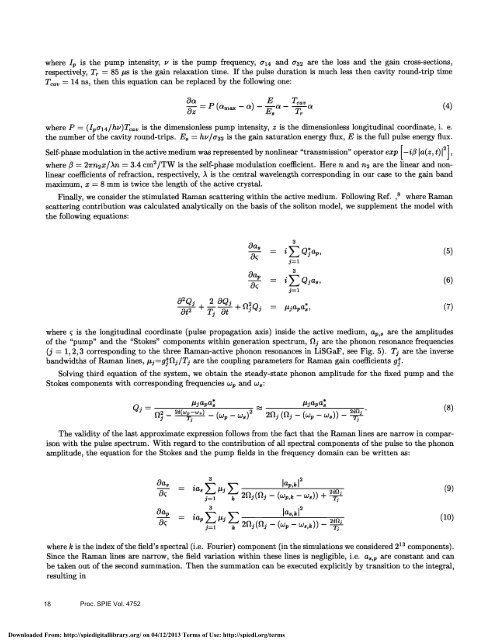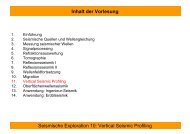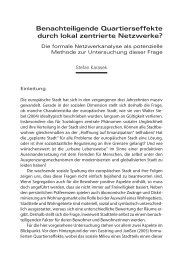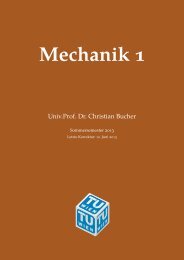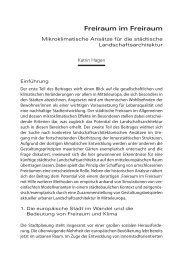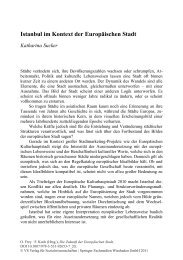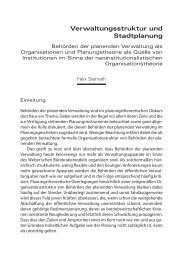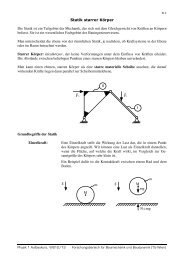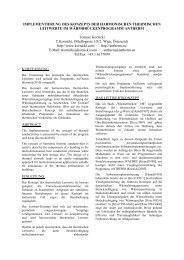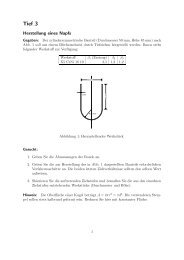Spectral characteristics of ultrashort pulses in Kerr-lens - TU Wien
Spectral characteristics of ultrashort pulses in Kerr-lens - TU Wien
Spectral characteristics of ultrashort pulses in Kerr-lens - TU Wien
You also want an ePaper? Increase the reach of your titles
YUMPU automatically turns print PDFs into web optimized ePapers that Google loves.
where I is the pump <strong>in</strong>tensity, ii is the pump frequency, 014 and 32 are the loss and the ga<strong>in</strong> cross-sections,<br />
respectively, Tr 85 /L5 is the ga<strong>in</strong> relaxation time. If the pulse duration is much less then cavity round-trip time<br />
14 ns, then this equation can be replaced by the follow<strong>in</strong>g one:<br />
Tcav<br />
ôa E Tcav<br />
P (am _ a) — ::a — -f--a (4)<br />
where P = (Ipo14/hV)Tcav 5 the dimensionless pump <strong>in</strong>tensity, z is the dimensionless longitud<strong>in</strong>al coord<strong>in</strong>ate, i. e.<br />
the number <strong>of</strong> the cavity round-trips. E8 = hv/a32 is the ga<strong>in</strong> saturation energy flux, E is the full pulse energy flux.<br />
Self-phase modulation <strong>in</strong> the active medium was represented by nonl<strong>in</strong>ear "transmission" operator exp [—1/3<br />
Ia(z, t)12],<br />
where 9 = 2irn2x/An 3.4 cm2/TW is the self-phase modulation coefficient. Here n and n2 are the l<strong>in</strong>ear and nonl<strong>in</strong>ear<br />
coefficients <strong>of</strong> refraction, respectively, A is the central wavelength correspond<strong>in</strong>g <strong>in</strong> our case to the ga<strong>in</strong> band<br />
maximum, x = 8 mm is twice the length <strong>of</strong> the active crystal.<br />
F<strong>in</strong>ally, we consider the stimulated Raman scatter<strong>in</strong>g with<strong>in</strong> the active medium. Follow<strong>in</strong>g Ref. ,8 where Raman<br />
scatter<strong>in</strong>g contribution was calculated analytically on the basis <strong>of</strong> the soliton model, we supplement the model with<br />
the follow<strong>in</strong>g equations:<br />
= i>Qap, (5)<br />
ô2Q• 2 DQ<br />
= pjapa, (7)<br />
i>.Qjas, (6)<br />
where c is the longitud<strong>in</strong>al coord<strong>in</strong>ate (pulse propagation axis) <strong>in</strong>side the active medium, a,8 are the amplitudes<br />
<strong>of</strong> the "pump" and the "Stokes" components with<strong>in</strong> generation spectrum, are the phonon resonance frequencies<br />
( j = 1, 2, 3 correspond<strong>in</strong>g to the three Raman-active phonon resonances <strong>in</strong> LiSGaF, see Fig. 5). T3 are the <strong>in</strong>verse<br />
bandwidths <strong>of</strong> Raman l<strong>in</strong>es, i=g1i/Tj are the coupl<strong>in</strong>g parameters for Raman ga<strong>in</strong> coefficients g.<br />
Solv<strong>in</strong>g third equation <strong>of</strong> the system, we obta<strong>in</strong> the steady-state phonon amplitude for the fixed pump and the<br />
Stokes components with correspond<strong>in</strong>g frequencies w, and w8:<br />
Qi = pjapa /aa<br />
. . (8)<br />
c — 2z(w—w,)<br />
(w — w8)2 21Z (1l — (w — w3)) —<br />
The validity <strong>of</strong> the last approximate expression follows from the fact that the Raman l<strong>in</strong>es are narrow <strong>in</strong> comparison<br />
with the pulse spectrum. With regard to the contribution <strong>of</strong> all spectral components <strong>of</strong> the pulse to the phonon<br />
amplitude, the equation for the Stokes and the pump fields <strong>in</strong> the frequency doma<strong>in</strong> can be written as:<br />
3 2<br />
— 5a8 . v-<br />
— IaP,kI<br />
.<br />
(9)<br />
a';<br />
1 k 21i(1i (wp,k—w3)) +<br />
aa . Ia8kI<br />
-— = (10)<br />
where k is the <strong>in</strong>dex <strong>of</strong> the field's spectral (i.e. Fourier) component (<strong>in</strong> the simulations we considered 213 components).<br />
S<strong>in</strong>ce the Raman l<strong>in</strong>es are narrow, the field variation with<strong>in</strong> these l<strong>in</strong>es is negligible, i.e. a3, are constant and can<br />
be taken out <strong>of</strong> the second summation. Then the summation can be executed explicitly by transition to the <strong>in</strong>tegral,<br />
result<strong>in</strong>g <strong>in</strong><br />
18<br />
Proc. SPIE Vol. 4752<br />
Downloaded From: http://spiedigitallibrary.org/ on 04/12/2013 Terms <strong>of</strong> Use: http://spiedl.org/terms


